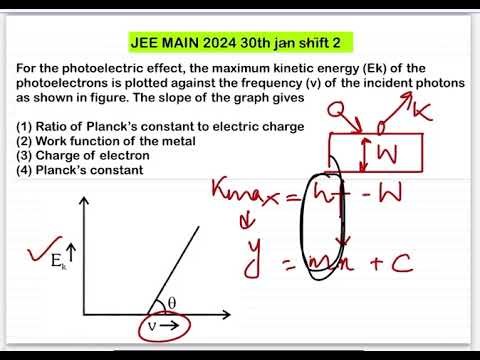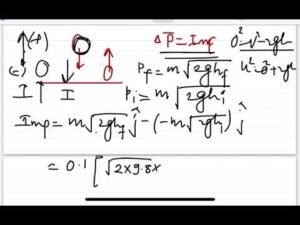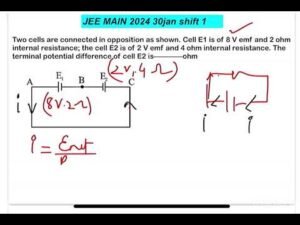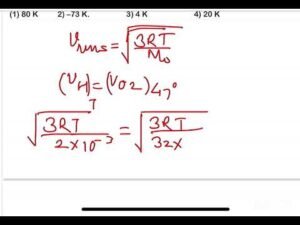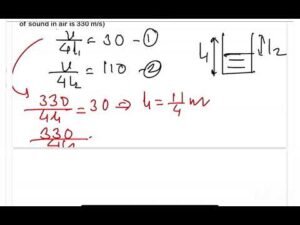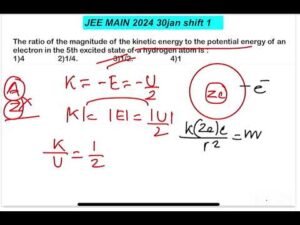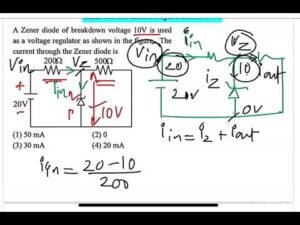*Playlist JEE MAIN 2024(30jan shift2)**
****2024 complete solution playlist**😃🤘🏻
*****2025 complete solution playsit*****
***All JEE Main/AIEEE questions playlist***😃🤘🏻
***All NEET PYQs playlist***😃🤘🏻
✅✅✅😃You can also find for chapterwise playlist of JEE MAIN and NEET on the channel👍🏻👍🏻✅✅✅
#jee,#jeemain,#iitjee,#neet,#pyq,#importantquestions,#jeemainpapersolution,#jeemain2025,#physicsmonk
For the photoelectric effect, the maximum kinetic energy (Ek) of the photoelectrons is plotted against the frequency (v) of the incident photons as shown in figure. The slope of the graph gives
(1) Ratio of Planck’s constant to electric charge
(2) Work function of the metal
(3) Charge of electron
(4) Planck’s constant
Welcome to Allen.AskDoubtnut.com – India’s Largest Platform for Instant Doubt Solutions
Allen.AskDoubtnut.com is the ultimate destination for instant video solutions to your doubts in Physics—from Class 11th to JEE Advanced and NEET level. With a growing library of over 15 lakh+ expert-created video solutions, we make learning fast, easy, and effective.
Just click a photo of your doubt using the AskDoubtnut in the end and submit in google, and get an instant, step-by-step video explanation. It’s the simplest way to solve doubts in seconds—whether you’re studying for CBSE board exams, IIT-JEE, NEET, or any other competitive exam.
Why AskDoubtnut.com?
• 10,00,000+ Free Video Solutions
• Covers NCERT, JEE Main, JEE Advanced, NEET, and State Boards
• Unlimited Doubt Solving with Just One Click
• Instant, Concept-Based Answers by Experts
• 24×7 Learning Support via the AskDoubtnut App
Trusted by millions of students across India, Allen.AskDoubtnut.com helps you turn doubts into confidence. No more waiting—ask, learn, and grow with Allen.AskDoubtnut.com!
Frequently Asked Questions
How to prepare for IIT-JEE Physics?
To prepare for IIT-JEE Physics, focus on understanding concepts rather than memorizing formulas. Practice solving a variety of problems, especially previous years’ questions. Create a study schedule that covers all topics, with extra time for challenging areas like Mechanics and Electromagnetism. Regular revision and mock tests are essential for success.
What is the difference between elastic and inelastic collisions?
In elastic collisions, both momentum and kinetic energy are conserved. Examples include collisions between hard billiard balls. In inelastic collisions, only momentum is conserved while some kinetic energy is converted to other forms like heat or sound. Most real-world collisions are inelastic to some degree.
How does electromagnetic induction work?
Electromagnetic induction is the process of generating an electromotive force (EMF) in a conductor by changing the magnetic field through it. According to Faradays Law, the induced EMF is proportional to the rate of change of magnetic flux. This principle is the basis for generators, transformers, and inductors, which are essential components in electrical power systems.

